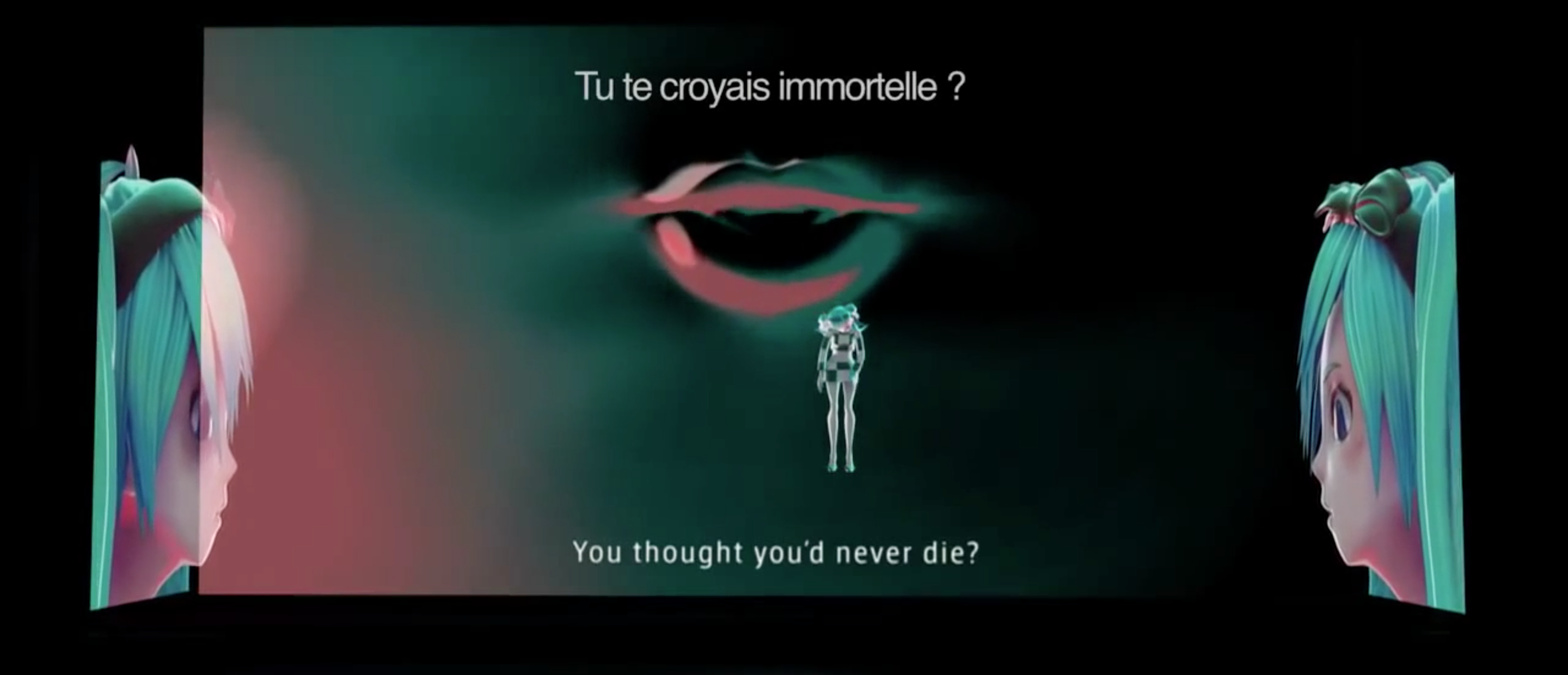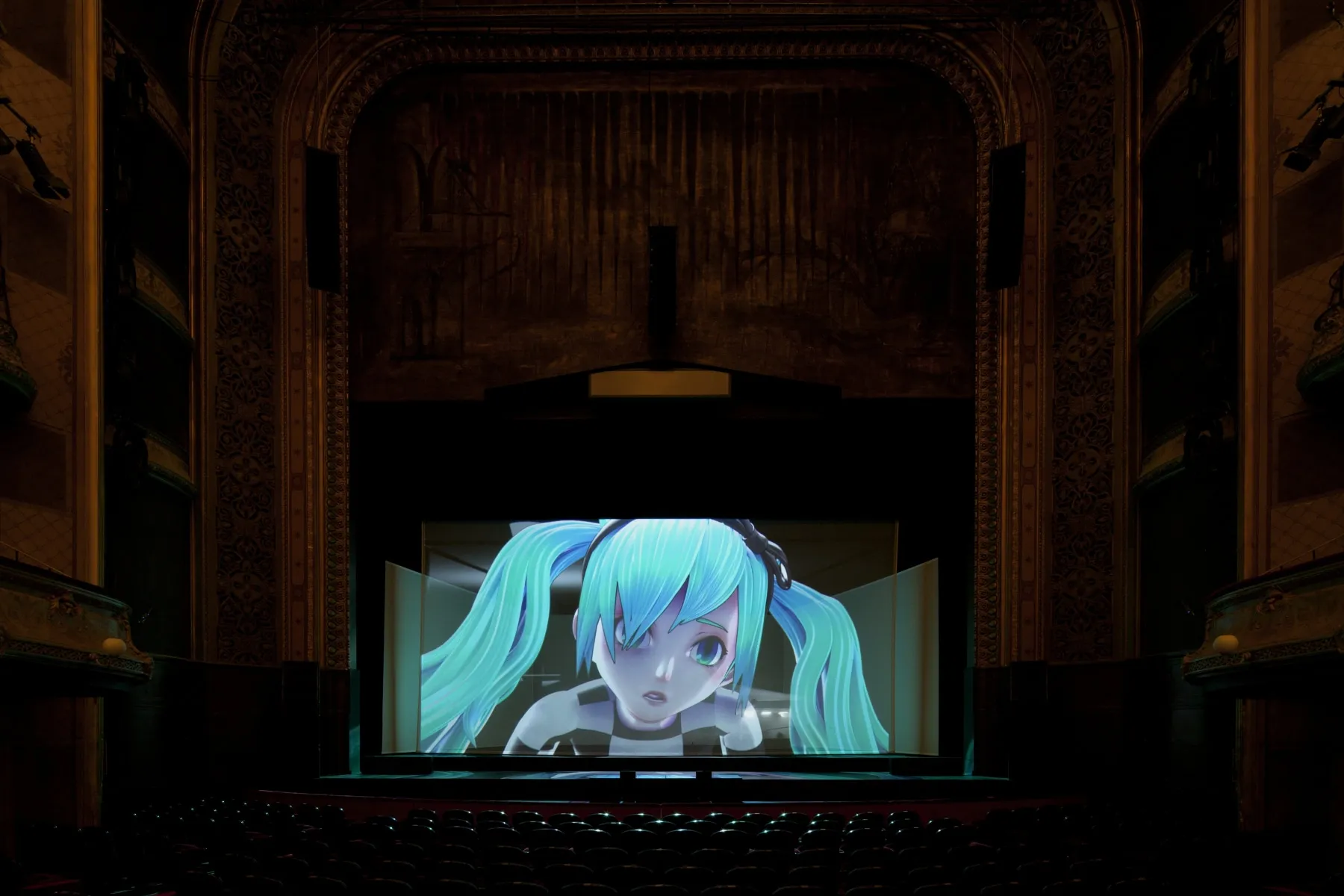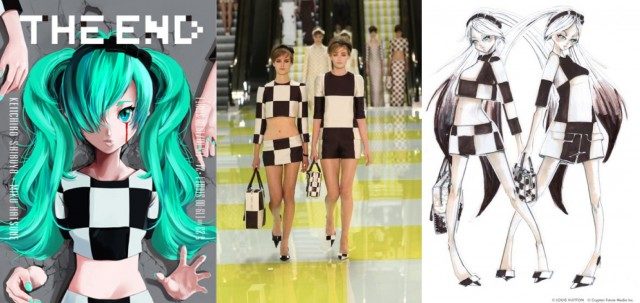Sixteen-year-old Japanese singer Hatsune Miku grew in short time to a worldwide popstar. With her colourful appearance she counts millions of followers on social media, she collaborated with Pharrell Williams, opened Lady Gaga's concerts and even appeared in car commercials. She was in the Netherlands last summer to perform in her very own opera The End. More precisely: the hard-disk containing her was.
Because she is not made of flesh and bones, she is an entirely digital hologram with a computer-generated voice. Nevertheless, the huge concerts of Miku that take place in the biggest stadiums of Japan are often sold out in the blink of an eye. Hundreds of thousands of ecstatic fans love her dance moves, her dress designed by Louis Vuitton, her characteristic blue hair and, above all, the sound of her voice.
Last June during the Holland Festival in Amsterdam, digital vamp Hatsune performed in opera The End, directed by composer Keiichiro Shibuya. Her computer voice allows her to do things a 'normal human' is not capable of. "As she is digital, her tempo can be adjusted to an extreme amount of beats per minute. The same goes for her dancing. For Miku, it's just a matter of turning a knob" says Matijs de Jong, board member of the Dutch J-Pop foundation in an AD article. "But when the electricity goes down, she's dead".Exactly that, death, is what the opera is about. It takes place in a space formed by four translucent screens with projections that overlap each other and a sometimes visible coffin-shaped cabin for the composer - the only human on stage. The story starts off by Hatsune and her digital furry friend who emerge in space, accompanied by a robotic voice saying "The light shines down on an object, and it comes into existence. Everything is like that, especially us". Then Miku meets a stranger, that seems to be a ghost-like version of herself who tells her she will die as well, as all humans do: this is the starting point of the search for an answer. What does the existence of Hatsune Miku mean? This question, combined with the slightly unnatural vocals and repetitive electronic music in the context of a traditional opera building, creates a very touching experience.
It all started as a voice
Technically, this singing piece of technological wonder is officially called 'vocaloid': a synthetic singing voice. The name Hatsune Miku translates from Japanese as 'first sound of the future'. In 2007 she was developed by Japanese company Crypton Future Media, with the use of voice synthesizing software from Yamaha. The most diverse sounds were recorded and digitized, based on the voice of human actress-singer Saki Fujita. This was brought together in a software program to be used by composers and musicians.
As this robot voice which sounded relatively natural grew more popular, Crypton decided to give it an official image. That image became Hatsune Miku in 2013: a cute Manga girl who will stay sixteen till eternity. And that was a very smart move as she quickly rose into a worldwide star. So far the company decided to make her voice samples available for free, making her rise even higher. "On YouTube there are countless of her songs. Everybody uses her. Because she is obedient, cute and sings perfect Japanese without ever losing a breath", says De Jong.
The love for virtuality
Why would especially Japanese love these vocaloids so much? According to De Jong, the answer is simple. "Japan has a cultural history where robots played a positive role. Partly this was due to cartoonist and animator Asamu Tezuka who made the cartoon of Astro Boy amongst other successful and loved cartoon figures. His work has had a big influence on thinking in Japan, making them, in this case, almost addicted to technology and totally mad about robots and other humanlike tech-things. If you see it from that point, Hatsune's success is logical".
While in the Netherlands, such a performance can be seen as quite unique, in Japan there are countless of performances similar to Hatsune Miku in The End. But when a digitally made singer like Hatsune grows this successful, we can ask ourselves where virtuality ends and reality begins. When would Hatsune Miku be dead? Luckily the girl asks herself these existential questions as well.

Source: AD, Holland Festival, BKRW. Image: YouTube



Comments (0)
Share your thoughts and join the technology debate!
No comments yet
Be the first to share your thoughts!